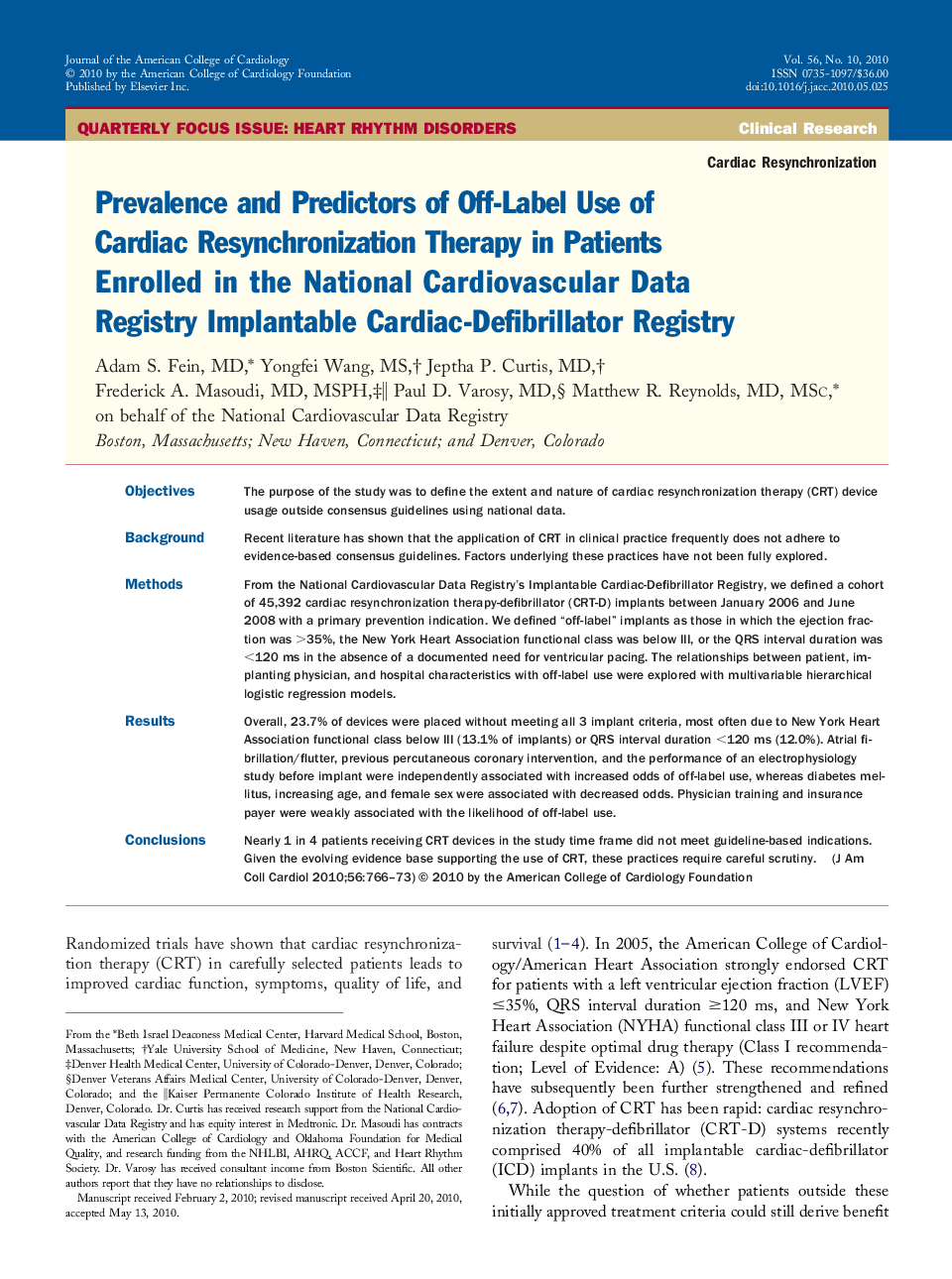| کد مقاله | کد نشریه | سال انتشار | مقاله انگلیسی | نسخه تمام متن |
|---|---|---|---|---|
| 2948394 | 1577301 | 2010 | 8 صفحه PDF | دانلود رایگان |

ObjectivesThe purpose of the study was to define the extent and nature of cardiac resynchronization therapy (CRT) device usage outside consensus guidelines using national data.BackgroundRecent literature has shown that the application of CRT in clinical practice frequently does not adhere to evidence-based consensus guidelines. Factors underlying these practices have not been fully explored.MethodsFrom the National Cardiovascular Data Registry's Implantable Cardiac-Defibrillator Registry, we defined a cohort of 45,392 cardiac resynchronization therapy-defibrillator (CRT-D) implants between January 2006 and June 2008 with a primary prevention indication. We defined “off-label” implants as those in which the ejection fraction was >35%, the New York Heart Association functional class was below III, or the QRS interval duration was <120 ms in the absence of a documented need for ventricular pacing. The relationships between patient, implanting physician, and hospital characteristics with off-label use were explored with multivariable hierarchical logistic regression models.ResultsOverall, 23.7% of devices were placed without meeting all 3 implant criteria, most often due to New York Heart Association functional class below III (13.1% of implants) or QRS interval duration <120 ms (12.0%). Atrial fibrillation/flutter, previous percutaneous coronary intervention, and the performance of an electrophysiology study before implant were independently associated with increased odds of off-label use, whereas diabetes mellitus, increasing age, and female sex were associated with decreased odds. Physician training and insurance payer were weakly associated with the likelihood of off-label use.ConclusionsNearly 1 in 4 patients receiving CRT devices in the study time frame did not meet guideline-based indications. Given the evolving evidence base supporting the use of CRT, these practices require careful scrutiny.
Journal: Journal of the American College of Cardiology - Volume 56, Issue 10, 31 August 2010, Pages 766–773